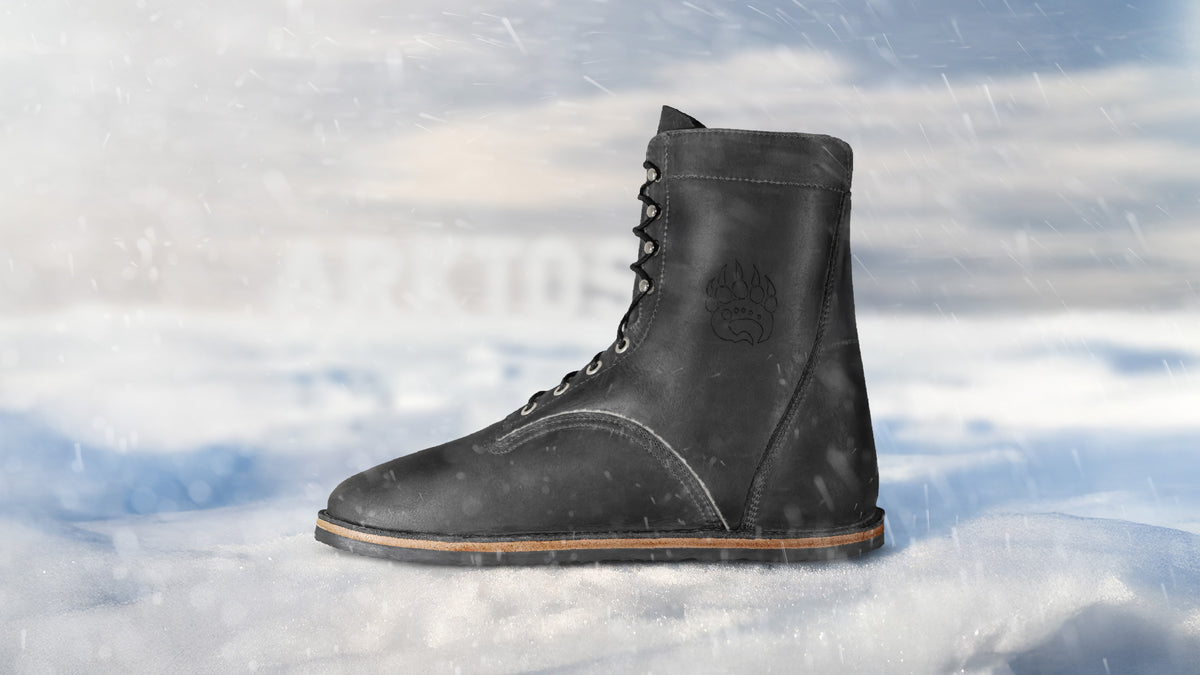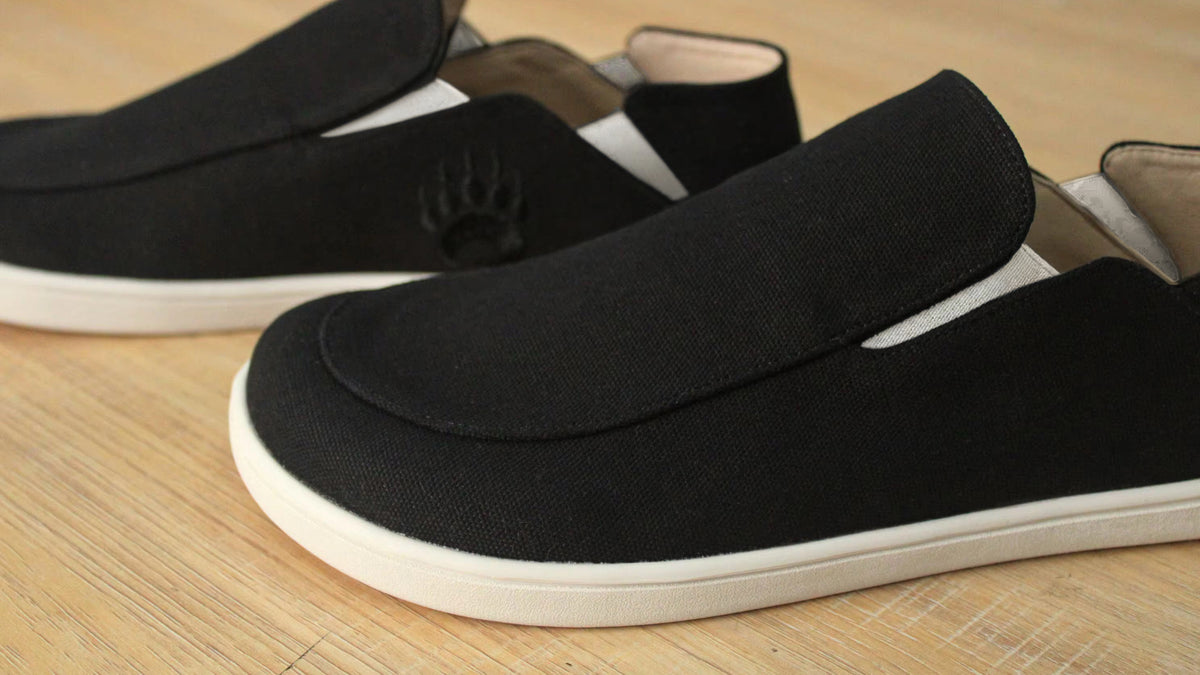Can Your Footwear Affect Your Jaw Pain?
We probably all know someone who has jaw pain. Many of these people will say (me included before getting my doctorate in body stuff, no shame), “I live with TMJ!” Which, is funny, in a nerdy way albeit, because we all have TMJs! TMJ stands for Temporomandibular Joint, and trust me, if you’re chewing enough food to refuel you after that sweet workout you did yesterday, you definitely have two jaw joints, or TMJs.
What people really mean to say is, “I live with TMD!” Which stands for Temporomandibular Joint (TMJ) Disorder.
TMD is a lovely condition where you may experience the feeling like something has exploded inside of your ear. It’s an experience where you may have to slurp more smoothies than chew your food, or constantly feel a vice-like sensation around your face from chronic muscle tension, like I did. Highly recommend it… not!
I wouldn’t wish this condition on anyone. And people have way more severe pain and symptoms than even I did. Like when your TMD progresses to the point that your jaw literally locks closed (or open, but that’s way more rare and often only in my hypermobile friends).
If you don’t experience TMD it is easy to ignore. But almost a third of people experience TMD at some point in their lifetimes (Valesan, et al, 2021). Although every body's adaptations to posture are truly unique, this article will go through some of the different causes of how not wearing the right shoes can lead to bad posture and ensuing chronic pain, specifically at the TMJ.
A note before we continue, no one posture is really "bad." I know that sounds counter intuitive, but diversity of posture is what we are after. Any position can be harmful when you stay in it a long time. In other words, our body is meant to be pliable and adaptable, and if you’re not allowing it to express that mobility and suppleness at least some of the time, you will progressively end up with more and more restricted joints, and less freedom to do things without experiencing pain.
Now this article isn’t to say that changing your footwear is a treatment for your TMD (seriously find a great Chiropractor, Physical Therapist or another holistic health care provider that understands this stuff and works with a dentist), but the relationship between the jaw and all your parts below is fascinating and may be helpful in understanding why footwear does truly matter and may be the root cause of your pain (here is a good place for us to remind you that the body is a tensegrity structure). The pain you experience in your daily life, whether it is low back pain, pelvic pain, foot pain or tmj pain, is likely exacerbated by the chronic altering of muscle, bone and ligament relationships that many of our "comfortable" shoes cause. To read even more about how your footwear is related to pelvic floor muscles and rehabilitation, read this.
The jaw is unlike any other joint in our body with regards to the level of phenomenal engineering it displays. The basics of this are that it rotates during the first part of movement and then it hinges afterwards on a disc (like a complicated version of our spines or knee menisci). This is kind of similar to how some cabinets have a two-stage swing mechanism that allows for them to function better and smoother. Opening of the jaw is finely controlled by the jaw muscles that connect into the back of your face (think behind your nose and above the upper palate of your mouth, yes it is trippy!).
Now, feel where your jaw joint is in your own body. If you GENTLY stick your fingers in your ears and open, you will feel the joint separation and movement. See how close this is to your ears? Ears control our hearing, obviously, but also our balance and sense of where we are in space. This is controlled and sensed via the fluid-movement in 6 circular tubes deep inside our ears, called the semicircular canals of the vestibular system. I like to think of these similarly to the liquid levelers that builders use in which the bubble tells you the relationship of the object being measured to the world around it.
Although we still don’t fully know with 100% certainty how our vestibular system works (the scientific community at large), the aforementioned example of the leveler is one proposed mechanism for why when you put something between your teeth, the engagement of your foot and calf muscles change (Valentino, 1991). Basically, your leveling system is affected by your jaw position because your jaw position sways your ear position, which sways the position of your vestibular canals, which is like changing the headings on a compass slightly. This shift requires specific muscular coordination throughout your entire body to keep you standing up straight. Yes, we are all our own personal gyroscopes/ gimbals. Said another way, our connective tissues are a tensegrity structure, all parts are intimately related to every other part.
Another theory that is passed around is that the jaw simply affects the feet in a more stepwise approach (no pun intended). The jaw sits just in front of our first spinal vertebrae. When these tissues are chronically tight, they can shift the alignment of the top of our spine, which affects all the other articulating spinal segments below (tensegrity) (D'Attilio et al, 2005).
Think of this like a domino effect, when the position of one thing changes, everything else in the system is forced to respond. Or like your highschool physics class probably taught you– every action has an equal and opposite reaction (unless you want to fall over). Our body is really phenomenal at making small compensations for short periods… so good that you may not even notice that you're shifting and compensating… until we end up with chronic postural deviations and pain.
Additionally, when the jaw is tight, the muscles that pull the neck forward increase activity up to 33x (Ehrlich et al, 1999). By chronically shifting into forward head posture, not only do we create neck pain, but we force the low back to have to curve more to compensate. This in turn rocks the pelvis forward into anterior pelvic tilt (imagine the front of your belt line is closer to the floor than the back). To compensate for this, your hips have to flex more, which changes the lines of pull your glutes and calf muscles, decreasing these muscles ability to propel you through space (Garstka et al, 2022).
This is a kinetic chain approach to understanding the body, whereby every part affects the part above and below. That is likely why, a recent study found if the jaw was dysfunctional, they were more likely to have pelvic joint restrictions, and presented with decreased control of sideways stabilizing movements of your foot (pronation & supination) (Garstka et al, 2022) (Ohlendorf et al, 2014).
Here's some other fascinating facts that are all related to this kinetic approach theme:
-
Voluntarily clenching your teeth lowers the arch of your foot (Cuccia, 2011)
-
Clenching for 90 sec significantly reduces your hip ROM and consequently, releasing your jaw increases hip motion (Fischer et al, 2009)
-
Jaw position was found to change your walking speed and stability (Fujimoto et al, 2001)
-
Putting something between the teeth of rats asymmetrically for one week literally gave them scoliosis or curved spines (D'Attilio et al, 2005)
Now, the next two studies I want to tell you about are around this idea of ‘centric relation’ of the jaw. What the heck is that?! Well it isn’t as complicated as it sounds. Centric Relation is just when your lower jaw is in the most neutral position or is centered. This is the most forward and raised position (Palaskar et al, 2013).
(This concept is a great litmus test for your jaw care providers, by the way. If you start talking about this and they look confused, find someone else who understands this and has many treatment options before attempting to adjust your jaw/ do surgery/ inject you with something.)
Where this does get complicated is that this central jaw position is not always where your teeth fit together (especially if you’ve had orthodontist work) or where your muscles are at the most relaxed. But the point here is that if you put the jaw in this most centered or ‘centric relation’ position, you will run with greater symmetry and have better balance between all the structures below (Maurer et al, 2015) (Bracco et al, 2004).
Now, what does this really mean for you? Two things. Although many of these studies are looking at it from the jaw to the feet, the position of the feet of course affects the jaw, the ‘levelers’ in the ears and the spinal curves, too. Why would you want to give these structures more work to figure out by balancing yourself on wobbly cushions or altering the lines of pull by wearing high heels all day long?
When our muscles can't hold us up the way they were intended, we can develop pain conditions of overloading passive structures, like plantar fasciitis, knee pain, low back pain and we increase our risk of injury. Especially if you have TMD, consider what footwear you are choosing and how that may contribute to the required tension in your head to balance you, your poor posture and your pain relief.
The less invasive and bulky your shoes are, the easier finding a more correct standing posture will be, and the less likely you will be to develop these long-term problems. Of course, if you have more severe foot problems/ deformities this may not be the best advice for you, so make sure to consult with your healthcare provider to get an accurate diagnosis for you. But a word to the wise, be skeptical of over prescribed custom orthotics and steroid injections.
Secondly, pay attention to the position of your jaw during daily activities like working on the computer or lifting in the gym. So many of us unconsciously hold our jaws contracted because of extra stress, which we don’t realize may be affecting our preformance. The most relaxed position for your jaw is with your lips together, your tongue on the roof of your mouth just behind your front two teeth (‘N’ sound position) and your teeth gently relaxed open. Become obsessed with returning to this position throughout the day, and watch your jaw, tension of the surrounding tissues and downstream decreases in stability and alignment, decrease.
If you're looking for more movement tips on how to create adaptable or "good" posture in your healing process, check out our Youtube and Instagram for quality ideas.




























